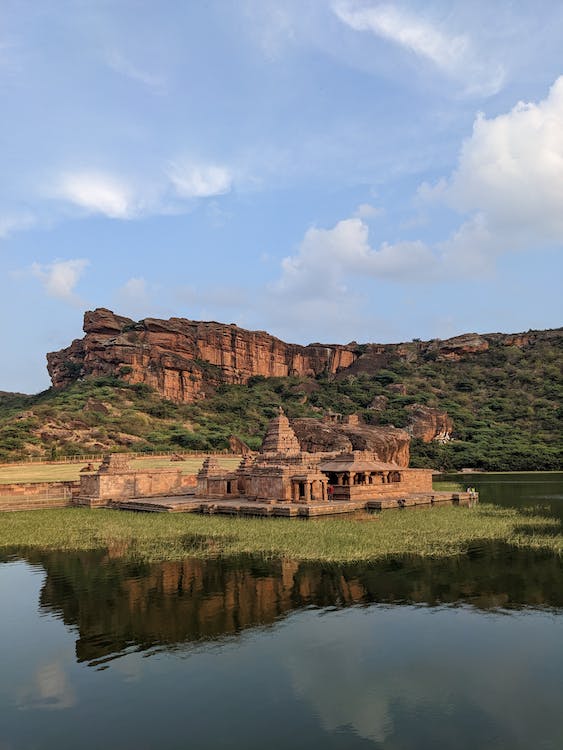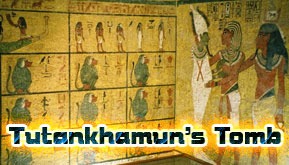Archaeology may not be the most exciting science ever, but it did and is still doing its purpose. Because of archaeological findings throughout the years, we discovered mysteries of the past that lead to the answers to some of our questions about the early history and civilization of the human race.
1. Rosetta Stone
Discovered in July 1799 by French soldiers just outside the Egyptian city of Rosetta, the Rosetta Stone is one of the most significant discoveries of archaeology of all time. The artifact is a black slab with inscriptions, which was dated around 200 BC. The Rosetta Stone was found to be a fragment of a bigger stone that contained a decree issued by King Ptolemy V and was written in Ancient Greek, Egyptian hieroglyphics, and Demotic script. Because of the presence of three scripts, researchers finally had a concrete clue that helped them decipher ancient Egyptian hieroglyphics – after 20 years.
 2. Tutankhamun’s Tomb
2. Tutankhamun’s Tomb
The most popular pharaoh of all time, the great Tutankhamun, was found by British archaeologists Howard Carter and George Herbert in 1922. The discovery gained worldwide press coverage, which made the pharaoh famous even after thousands of years after his death. People had a greater interest in Ancient Egypt because of the discovery of the nearly intact tomb, wherein over 2,000 pieces of valuable antiques and masks made up of mostly gold were found.
Tutankhamun became pharaoh around 1332 B.C. at a young age of nine and died about nine years later. Archaeologists say that the tomb appears to be done in a hurry after finding microbes on the walls, indicating the paint wasn’t even dry yet when the tomb was sealed. It seems plausible since the royalty died at a very young age, and it probably was unexpected.
3. Pompeii
Pompeii is a well-known archaeological site in the world, as most of our knowledge about everyday life in an ancient city in Rome was based on the existence of it. After the devastating eruption of Mt. Vesuvius in 79 A.D., the city of Pompeii was buried under ashes and debris for around 4 to 7 meters, killing all of the residents who failed to escape. Because no air and moisture could penetrate under the ashes, remains of the city and its citizens remained well-preserved even after centuries.
The lost city was undisturbed until 1599 as Domenico Fontana, an architect, stumbled upon the ancient walls while working on a project. Broader rediscovery happened in 1748 after the finding of another buried city named Herculaneum, which was found when workmen started digging a foundation for the summer palace of the King of Naples. Pompeii was intentionally excavated then, and now it remains as a popular tourist attraction in Italy.
4. Terracotta Warriors
In China, the collection of terracotta sculptures is a mesmerizing archaeological find that depicted the symbolic intention of protecting an emperor even in his afterlife. In 1974, Chinese farmers were digging for a well when they accidentally unearthed a life-size clay statue. Archaeologists were later involved, and they concluded that the terracotta army might consist of around 8,000 soldiers, 520 horses, and 130 chariots. They were buried near the tomb of China’s first emperor, Qin Shi Huang and they showed how ancient Chinese soldiers were equipped and dressed.
5. Moai Statues
The Moai, or giant head statues, are located on Easter Island in the Pacific Ocean. The figures, which range in height from 6 feet to over 30 feet, were built by Rapa Nui people as a representation of their ancestors whom they worship as ancestral gods. There were approximately around 900 moai on the island and they were carved and erected sometime between 1250 and 1500 A.D.
6. Dead Sea Scrolls
In 1947, three Bedouin shepherds accidentally discovered the Dead Sea Scrolls while looking for a lost goat into a cave near the ancient site of Qumran. Inside the cave, which was a mile away from the Dead Sea, they discovered clay jars containing seven papyrus scrolls. An antiquities dealer from Bethlehem bought the papyri, and later on, scholars heard about the discovery and tried to locate the cave. They discovered 900 more manuscripts in 11 caves in the area, which were penned between 250 B.C. and 68 A.D. It included manuscripts from the Bible, such as Genesis, Exodus, Deuteronomy, Kings, and Isaiah, as well as psalms, hymns, and calendars. The Dead Sea Scrolls was believed to be the oldest-known manuscript of the Hebrew Bible.
7. Machu Picchu
Also one of the most popular archaeological sites on the planet, Machu Picchu is a 15th-century refuge of the Inca civilization seated high on a mountainside in Peru. It was known to the locals, unknown to the Spanish conquistadors, and remained unknown until an American historian and professor Hiram Bingham III brought it to international attention in 1911. Scientists believe that the Machu Picchu was once the royal estate of the rulers of Inca in the 1400s and took more than 100 years to build. The site was a huge complex with walls, houses, terraces, and temples.
8. Ötzi the Iceman
German tourists Helmut and Erika Simon were hiking along the Ötztal Alps in 1991 when they stumbled upon the remains of a man who was identified as a Bronze age man. The glacier mummy, which was known as Ötzi the Iceman, lived over 5,000 years ago and was well-preserved. He became the subject of intensive scientific research and was identified to be of Neanderthal ancestry. Genetic analysis found that Ötzi had Lyme disease and is lactose intolerant, and identified 19 modern men from South Tyrol who are related to him.
9. Nazca Lines
The mysterious Nazca lines were never really “discovered,” as they are visible from nearby foothills, but scholarly study about the lines was pioneered by American historian Paul Kosok in the 1940s. The Nazca Lines are geoglyphs found in Peru cover about 170 square miles, comprising of geometric shapes, animal shapes, and plant structures. The ancient drawings were estimated at more than 2,000 years old and were created by Nazca Indians. The purpose and meaning of the geoglyphs are still unknown, but there are a number of theories that explain their use, most of them linked to religion, astronomy, and agriculture.
10. Antikythera Mechanism
Discovered by a group of sponge divers in 1901, the Antikythera Mechanism is mysterious, an ancient artifact found near a shipwreck off the Greek island of Antikythera. It was believed to be built by Greeks during 205 and 100 B.C. Scientists dubbed it as an ancient Greek computer; for some, it’s an ancient astronomical calculator, as it was composed of an intricate system of gears and series of dials.

